Even though I am now firmly into adulthood there are several things that even the mere thought of still produce a tremor of juvenile excitement through me, just as they did when I actually was a child.
Big Trak is one of these things – I never had one myself but we used to spend Christmas at a hotel in Wales which had a games room that housed a Big Trak. As a very young child in the early 1980s that kind of technology (being able to program it to go forwards, backwards, turn round and fire its laser beams etc.) used to blow my mind and I would spend hours sending it on completely pointless missions around the room. (I have never told anybody this but I would genuinely forgo every future present for the rest of my life if one birthday I woke up to find a Big Trak wrapped in a bow sitting on the end of my bed…)
Dark Tower was another one. I never had it, but my cousin owned this game and the interaction between the players and the computerised tower in this fantasy world was, for me, incredibly exciting. It felt like we were entering some enchanted adventure whenever it was unpacked from its box and I always got completely absorbed in the role playing element of it.
Obviously, compared to what’s available now, it doesn’t look remotely hi-tech any more but at the time the fact that the Tower could keep track of everything that was happening and gave you new information accordingly was pretty damn flash, not to mention ground-breaking in the field of electronic games at that time.
The set up consisted of a round board, split into four realms (one per player – you could play with just one or two opponents but it was far more interesting if you had the full quota). Each area was further divided into lots of individual spaces which represented the different types of areas you could visit: plains, bazaars, frontiers or tombs. In the centre of the four domains stood the tower: black, imposing and containing the interactive heart of the game. It was powered by batteries and had a small LED display at the front, which, alongside being the all-seeing eye of the proceedings, even played music during noteworthy moments.
Your ultimate quest was to negotiate the often hostile terrain, retrieve the three keys that would unlock the gates protecting the Dark Tower and then overcome its guards to recover the reigning tyrant king’s magic sceptre, thus removing his power and restoring peace to the land.
The keys had to be collected in the correct order of bronze, silver and gold and they could be found in the three lands belonging to the other players. Each one’s exact location was decided randomly by the Tower itself. On your way to get them you would encounter dragons, plagues, hunger and attacks from brigands, which you could parry with purchases from the bazaars or helpful discoveries in the tombs. You also needed to build your army up to give you a fighting chance of successfully attacking the tower (loud battle cries were optional at this point – I myself favoured them). The Tower would contain a predetermined amount of protectors and a few button presses would let you know if you had succeeded in your quest or not. If you did you won the entire game; if not you slunk back to your land shamefacedly and rebuilt your damaged battalion.
To play your turn, you rotated the tower to face you and moved your token forward one space. You would then press the button on the Tower’s display that corresponded to the area you were now in. The Tower would decide what the outcome of landing on that space was; for example it might announce that you’ve been ambushed by brigands which you can then choose to fight. The Tower would then inform you what had happened in that battle, i.e. how many of your troops remained standing. After you had resolved all outstanding issues the Tower would then be moved on to the next player for their turn to start.
Dark Tower was brought to market by Milton Bradley (MB) in 1981 but its shelf life was short. In 1985 Robert Burton and Allen Coleman – who were independent game developers – sued the company for stealing their idea and passing it off as its own. They had previously submitted a design to MB which consisted of a board with an electronic tower as the central focus, which they called ‘Triumph’. MB decided they weren’t interested in their offering but later on released the extremely-coincidentally-similar Dark Tower.
A verdict of ‘misappropriation of trade secrets’ was ruled by a jury and the pair won over $700,000. Then the trial judge, while agreeing that it was likely that the game company had copied the game without the consent of Burton and Coleman, overruled this decision due to the fact that the pair had signed an agreement with MB that waived any contractual relationship, and with it, a duty of confidentiality,
So from ‘We’re rich, hurray!’ to ‘No, we’re not, boo!’ almost immediately. But it didn’t end there. Sometime later the First Circuit Court of Appeals reversed the decision after they examined evidence and discovered that there had, in fact, been an implied understanding by MB regarding the confidentiality of Triumph. The $700,000 award was restored (‘We’re rich again, hurray!’).
Because of all this legal hoo-ha, however, the game went out of production fairly soon after its original release and, due also to some failing parts through long-term use, it is now pretty hard to find a reasonably priced, fully working version for sale. (If you do happen to have one tucked away in your loft, now might be the time to get it out and dust it down – they’re going for upwards of £250 on eBay…)
So, Dark Tower. Your time with us was fleeting but your impact on me is still felt to this day. Now, if only somebody could invent a much larger version of the game, where you negotiated the board using Big Trak…


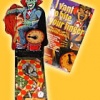
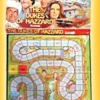

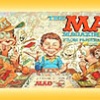

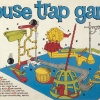
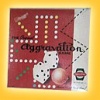
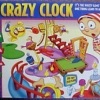


Do You Remember Dark Tower?
Do You Remember Dark Tower?